“From behind him came the sound of panes of glass shattering and crashing on to stone.” —Robert Harris
“I listen to the wind, to the wind of my soul. Where I'll end up, well, I think only God really knows.” —Cat Stevens
The final scene of the just released film version of Robert Harris’ novel Conclave is, I think, a visual homage to the great reformist Vatican II Council. A contentious conclave has elected a new pope. Electronically shuttered windows in the Domus Sanctae Marthae, the dorm-like structure in Vatican City where the voting cardinals have been housed, can at last be opened. Cardinal Thomas Lawrence, Dean of the College of Cardinals, stands at one of them and exults in the fresh breeze that flows into the stuffy room. He looks both relieved and hopeful.
The scene gestures at the words allegedly spoken by good Pope John XXIII when he decided to convene the 1962 reformist Vatican II Council: “I want to throw open the windows of the Church to let in fresh air!”1 Both the novel and the film depict a moment when the Church’s windows are indeed thrown open in the hope that God’s breath will revitalize what’s become a stale and dusty ecclesial museum. Change, of course, is risky. The wind bloweth where it listeth, and thus is unpredictable. It might prove to be a whirlwind that sweeps the Church away once and for all. But it may also be, as the Book of Job reminds us, that sometimes the whirlwind is God himself.
Before you go any further, here’s the de rigueur spoiler alert: if you haven’t yet read the novel or watched the film, you may want to stop here.
The Plot
Harris’ 2016 novel isn’t great literature, but it is a page-turner that offers up a goodly amount of suspense and intrigue, not to mention a brain-jarringly unexpected finale.
Following the pontiff’s death, cardinals from around the world converge on Vatican City to elect his successor. Four in particular are papabili, likely contenders for Peter’s throne: Cardinal Joseph Tremblay, the Canadian Camerlengo, a moderate conservative; Cardinal Aldo Bellini, a liberal theologian and past Vatican Secretary of State; Cardinal Joshua Adeyemi, a Nigerian conservative prelate; and Cardinal Goffredo Tedesco, the boorish but cunning traditionalist Patriarch of Venice. As the voting drags on, ballot after ballot, Thomas Lawrence, the curia official charged with keeping the whole process on track, discovers to his dismay that he too has become a contender.
Lawrence’s ascendency is due to the unpleasant fact that each of the four favorites turns out to have feet of clay. Tremblay tries to bribe his way to the throne, Adeyemi is implicated in a sexual scandal, Bellini proves too neurotically timid to shepherd the Church, and Tedesco repulses his brother cardinals with a hate-filled rant for the Church to declare a holy war against Islam.
These are already plot twists enough to keep readers and viewers on the edge of their seats. But then comes another one: Cardinal Vincent Benitez takes centerstage by responding to Tedesco’s martial rant with a reminder that violence is contrary to the teachings of Christ. His message is delivered with such gentle but firm authority that his fellow cardinals are awed.
Benitez is something of a mystery. A Filipino, he was consecrated in pectore (in secret) by the late pope. Not even Lawrence, the Dean of the College, was aware of his elevation until he shows up at the Vatican for the conclave. But some of the cardinals knew of his selfless ministry as an ordinary priest to homeless women in the Philippines and victims of sexual violence in the Congolese wars. Benitez genuinely walks the nonviolent love he talks.
On the eighth ballot, the one that follows Benitez rebuke of Tedesco, the Filipino is elected pontiff and announces that he’ll take Innocent as his papal name. Then comes the novel’s and film’s final and most surprising twist: we learn that Benitez is an intersexed person, born with exterior male genitalia but internal female organs. Although Lawrence, a man who has spent his entire adult life conforming to the norms of the Church, is shocked, he doesn’t contest Benitez’s election. After all, the late pope, whom Lawrence loved and respected, knew about Benitez’s sexual identity when he made him a cardinal in pectore. There must’ve been a deep reason for his decision.
The film’s storyline sticks pretty closely to the book’s. The two most obvious changes are really inconsequential. The lead character has been changed from an Italian cardinal named Lomeli to a British one named Lawrence, and Cardinal Vincent Benitez, Archbishop of Baghdad in the novel, becomes Archbishop of Kabul in the film. Most of the film’s dialogue is taken straight from Harris’ novel, although predictably cut down (but not, thankfully, butchered) to fit into a two-hour movie.
Like the novel itself, the film version, released less than a month ago in the U.S., is good but not great. Its best feature is its masterful cinematography, ably supervised by Stéphane Fontaine. He and director Edward Berger (All Quiet on the Western Front, 2020), offer striking visuals that I can only describe as minimalistic, despite the fact that the action takes place in Vatican-style architectural opulence. (A similar minimalism goes for composer Volker Bertelmann’s score.)
In a typical scene, for example, the scarlet and purple of a bishop’s and cardinal’s choir dress contrast sharply with the watercolor wash of the elaborate staircase the men are descending. The Church as an imposing ediface recedes; humans, with all their colorful virtues and vices, take centerstage.
In another, the camera follows white-umbrellaed cardinals as they march across St. Peter’s Square to the Sistine Chapel. Magnificent!
Even though the film’s visual minimalism serves to focus audience attention on the acting, the performances, unfortunately, are uneven.
There are three indisputable standouts. Ralph Fiennes has been widely and properly praised for his lead role as Cardinal Thomas Lawrence, Sergio Castellitto is Academy-Award-winningly superb as the fiery tradionalist Cardinal Tedesco, and Lucian Msamati skillfully captures the bluster and underlying fragility of his character, Cardinal Joshua Adeyemi. But John Lithgow as Cardinal Tremblay is woefully under-utilized, making what’s really little more than a handful of cameo appearances. The same goes for Isabella Rossellini’s Sister Agnes (although, to be fair, her character doesn’t get a lot of lines in the novel either). Stanley Tucci as Cardinal Bellini uninspiringly exhibits the same attenuated acting range we’ve come to expect from him. And Carlos Diehz as the mysterious Cardinal Vincent Benitez navigates his way as best he can through an incredibly difficult role, but never quite pulls it off.
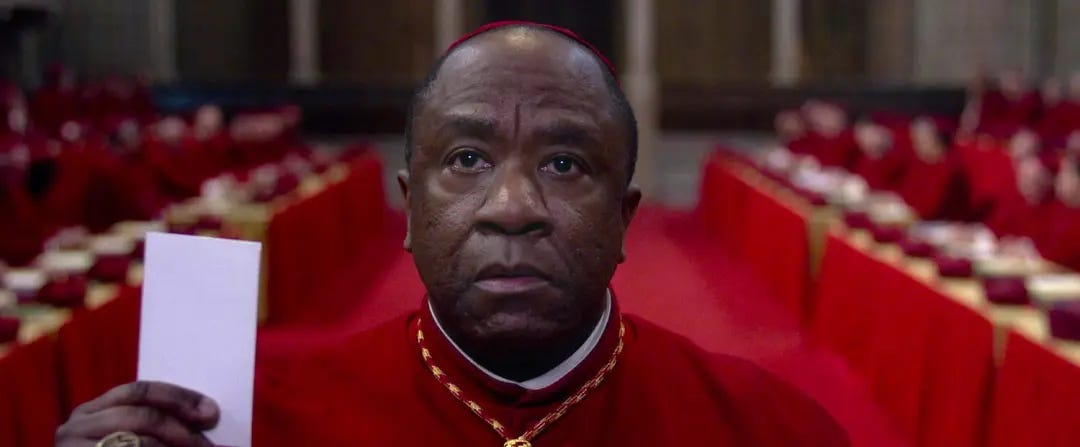
So: Why Bother?
If neither the novel nor film is great, why bother with them here?
Publicists describe Conclave as a “mystery” or “thriller,” and there’s some truth to the characterization. But that billing is primarily a marketing tactic to grab audiences, because the heart of the story—the tension between the Church as it is, with all its in-fighting, scandals, and rigidity, and the Church as it ought to be—is well worth thinking about. As one of the conclave cardinals describes himself and his fellow papabili in a rare moment of self-appraisal, “We are mortal men. We serve an ideal; we cannot always be ideal.”2
Fire and Ice
Cardinal Lomeli/Lawrence (hereafter Cardinal L/L), the story’s main character, exemplifies the tension. Like most members of the curia, he’s a company man, someone who’s dedicated his entire adult life to preserving the institutional Church. Yet he now finds himself religiously adrift, alienated from God and unable to pray. His spiritual uneasiness only increases when he discovers from Cardinal Bellini that the late pope had expressed his own doubts shortly before his death.
L/L: “The Pope had doubts about God?”
Bellini: “Not about God! Never about God! What he had lost faith in was the Church.”3
The pope’s reservations about the health of the Church, coupled with his own spiritual dryness, forces Cardinal L/L to ask himself whether it was “really possible that he had spent the past thirty years worshipping the Church rather than God.”4 It’s a question that haunts him throughout the entire conclave. Harris’ implication is that it ought to haunt real-life Churchmen as well.
As Dean of the College of Cardinals, it’s up to Cardinal L/L to offer an inaugural homily to the assembled prelates. Prompted by his own uneasy suspicion that the pope might’ve been right to worry about the institutional Church, he suggests to his brother cardinals that they should guard against rigidity in belief and policy—or, in the words attributed to John XXIII, they ought to invite the fresh breeze of reform to sweep away the cobwebs of a dusty museum-church.
“God could, after all, have created a single archetype to serve Him. Instead, he created what a naturalist might call a whole ecosystem of mystics and dreamers and practical builders with different strengths and impulses, and from these he fashioned the body of Christ […] Let me tell you that the one sin I have come to fear more than any other is certainty. Certainty is the great enemy of tolerance […] Our faith is a living thing precisely because it walks hand in hand with doubt. If there was only certainty, and if there was no doubt, there would be no mystery, and therefore no need for faith.”5
The very next day, the homily is brutally (and predictably) assailed by an old-school cardinal as an unworthy surrender to the “dictatorship of relativism” that accommodates “every passing sect and fad of modernism.” “We do not need a Church that will move with the world but a Church that will move the world.”6
What both the late pope and Cardinal L/L sense is that any institution, especially one like the Church which claims to be sanctioned by God, runs the risk of ideological ossification; this is what he means by “certainty.” When doctrines and norms get set in stone, any deviation from them is viewed as a “relativistic” threat to the established order and must be quashed. The electrically energized early Church described in Acts of the Apostles is steadily defused by the growth of a byzantinely topheavy monolith. Rigidity and authoritarism guard against both novelty from within and criticism from without, while at the same time encouraging competition for power among the institution’s leadership.
The early twentieth-century Russian author Yevgeny Zamyatin explored the dynamics of institutional ossification in a remarkable 1923 essay entitled “On Literature, Revolution, Entropy, and Other Matters.” He argued that two “laws” constantly compete with one another in human affairs. One, the law of revolution, “is red, fiery, deadly.” It sweeps away the old in order to “birth new life, a new star.” The second is the law of entropy, “cold, ice blue, like the icy interplanetary infinities.” Once the new star is born, entropy immediately begins cooling its edges, struggling to stretch into its heart: “The flame turns from red to an even, warm pink, no longer deadly, but comfortable.” The fiery creativity that once fueled institutions grows sluggish.
When the flaming, seething sphere (in science, religion, social life, art) cools, the fiery magma becomes coated with dogma—rigid, ossified, motionless crust. Dogmatization in science, religion, social life, or art is the entropy of thought. What has become dogma no longer burns; it only gives off warmth—it is tepid, it is cool. Instead of the Sermon on the Mount, under the scorching sun, to upraised arms and sobbing people, there is drowsy prayer in a magnificent abbey.
This is the trajectory of all institutions, including the Church.
What can revitalize them once their original energy has cooled? For Zamyatin, what’s required is an influx of creative energy supplied by visionaries, members of the institution able to break free of its comfortable but stultifying confines long enough to envision alternatives. Those who dare to question the unquestionable doctrines and norms, those who challenge the status quo—Cardinal L/L’s “dreamers and mystics”—are catalysts for revival. As Zamyatin notes, “Heretics are the only (bitter) remedy against the entropy of human thought.”7
Shattering the Ice/Glass
The bickering, bargaining, and intrigue among cardinals vying for the Throne of St. Peter in Conclave exemplifies what happens when princes of the Church forget what the Church should be about. Having relegated to themselves instead of God the kingdom, the power, and the glory, they care only about (1) preserving the institutional Church because (2) they yearn to be its pontiff. The ugly truth Cardinal L/L discovered about himself goes for them as well: the true object of their devotion is the Church, not God.
But the winds of change are coming. I’ve already mentioned the fresh breeze blowing through the open window in the film’s final scene. But there’s an earlier dramatic moment that also symbolizes recreation. During the conclave’s seventh ballot, a terrorist bomb explodes outside the walls of the Sistine Chapel, shattering the glass of its windows and propelling shards upon the assembled cardinals.
“There was a terrific bang, the floor quivered, and from behind [Cardinal L/L] came the sound of panes of glass shattering and crashing on to stone […] The marble floor was covered in broken glass […] Looking up, he saw […] the two windows had both been blown in. They had been big—three or four metres high, made up of hundreds of panes—and their debris was like a drift of crystallized snow.”8
This scene is a portend of the breaking of the entropic ice that has long imprisoned the Church. The hundreds of shattered window panes surely symbolize the tens of hundreds of edicts, encyclicals, curial judgments, Vatican pronoucements, episcopal rulings, and priestly layings-down-the-law that have progressively smothered the Church’s original flame. The explosion scene also points to the tale’s finale. The elevation of the intersexed Cardinal Benitez to the papacy smashes through the ultimate glass ceiling: the Roman Church’s rigid and absurdly counter-intuitive (not to mention counter-scriptural) insistence that only men are called by God to be clergy. Only a man can be God’s papal surrogate on earth.
Harris’ decision to make Benitez intersexed is a literary challenge to the actual Roman Church to break free of a testosterone-heavy ecclesial institutionalism that’s big on topdown authoritarianism, clericalism, turf-protection, and conformity. What the Church badly needs is a more balanced—a more scriptural—approach that values men and women equally so that masculine impersonal order-and-obedience tendencies are modulated by narrative-empathic feminine ones.9 Both are necessary for the creative spirit to flourish. Benitez carries this balance in his own body. Pope Innocent—a leader “innocent” or free of the uber-masculinity that leads to ossification on the one hand and unseemly competition for the position of topdog on the other—is precisely the heretic the Church needs. This is what the old pope saw. This was what he pinned his hopes on.
Needless to say, Conclave’s surprise conclusion has outraged conservative Roman Catholics. No less a figure than Bishop Robert Barron, influential founder and star of the Word on Fire Ministry, has warned Catholics to stay away from Conclave, blasting the film as a woke shill for “diversity [and] inclusion” that “could have been written by the editorial board of the New York Times.”10 But this overwrought reaction smacks of a hyper-defensiveness that unwittingly attests to the calcification of a Church that brooks no criticism, the very state of affairs Harris describes.
Book critic Vanessa Friedman once claimed that Conclave “could become a Catholic version of The Satanic Verses.”11 I suspect this is an exaggeration. Neither the novel nor the film has enough leverage to launch a virulent, not to mention violent, wave of condemnation like the one that hit Rushdie. But I do believe that the sentiments Harris voices in Conclave are not at all confined to the “woke” crowd so disdained by Barron. That the Roman Church, at least in the U.S., has been shedding members at an accelerating rate12 attests to the fact that the windows are badly in need of being thrown open by a Vatican III Council, and that Catholics in the pews feel it.
###
Although quoted everywhere, it’s not clear that John actually spoke this famous line. It is, however, perfectly in keeping with his intentions in calling for Vatican Council II. For more on the line’s authenticity, see Sharon Kabel, “Catholic Fact Check: Pope John XXIII and Fresh Air” (21 July 2023.)
Robert Harris, Conclave (New York: Vintage, 2024), p. 185.
Ibid., p. 22.
Ibid., p. 194.
Ibid., pp. 92, 93-94.
Ibid., p. 115.
“On Literature, Revolution, Entropy, and Other Matters,” in A Soviet Heretic: Essays by Yevgeny Zamyatin, ed. & trans. Mirra Ginsburg (Chicago: University of Chicago Press, 1970), p. 108.
Conclave, pp. 240, 241-242.
I’m obviously invoking here the functional distinction drawn by Carol Gilligan in her landmark 1982 book In a Different Voice.
Bishop Robert Barron on X: “Just saw Conclave. If you are interested in a film about the Catholic Church that could have been written by the editorial board of the New York Times, this is your movie. The hierarchy of the Church is a hotbed of ambition, corruption and desperate egotism, Conservatives are xenophobic extremists and the liberals are self-important schemers. None can escape this irredeemable situation. The only way forward is the embrace of the progressive buzz words of diversity, inclusion, indifference to doctrine, and the ultimate solution is a virtue signaling Cardinal who takes the Papal name of Innocent and who is a biological female. Since it checks practically every woke box, I’m sure it will win a boatload of awards, but my advice is to run away from it as fast as you can.” 10:20 AM · Nov 4, 2024
Vanessa Friedman, “Robert Harris’s Thriller Goes Inside the Vatican.” New York Times (1 Dec 2016).
Ryan Burge, “The Catholic Church is In Trouble in Places Where it Used to Dominate.” Graphs About Religion (12 October 2023).




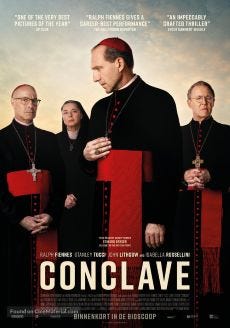
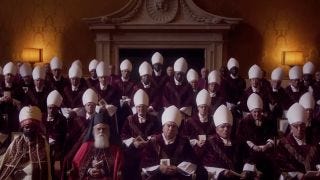

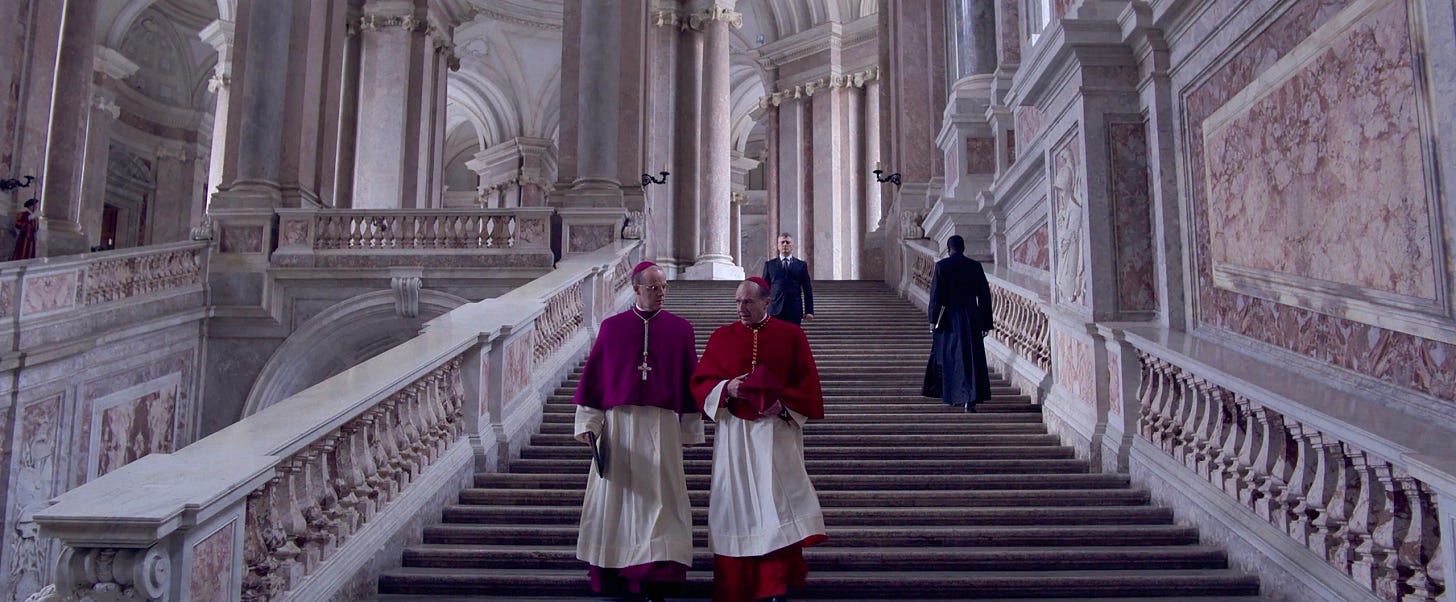
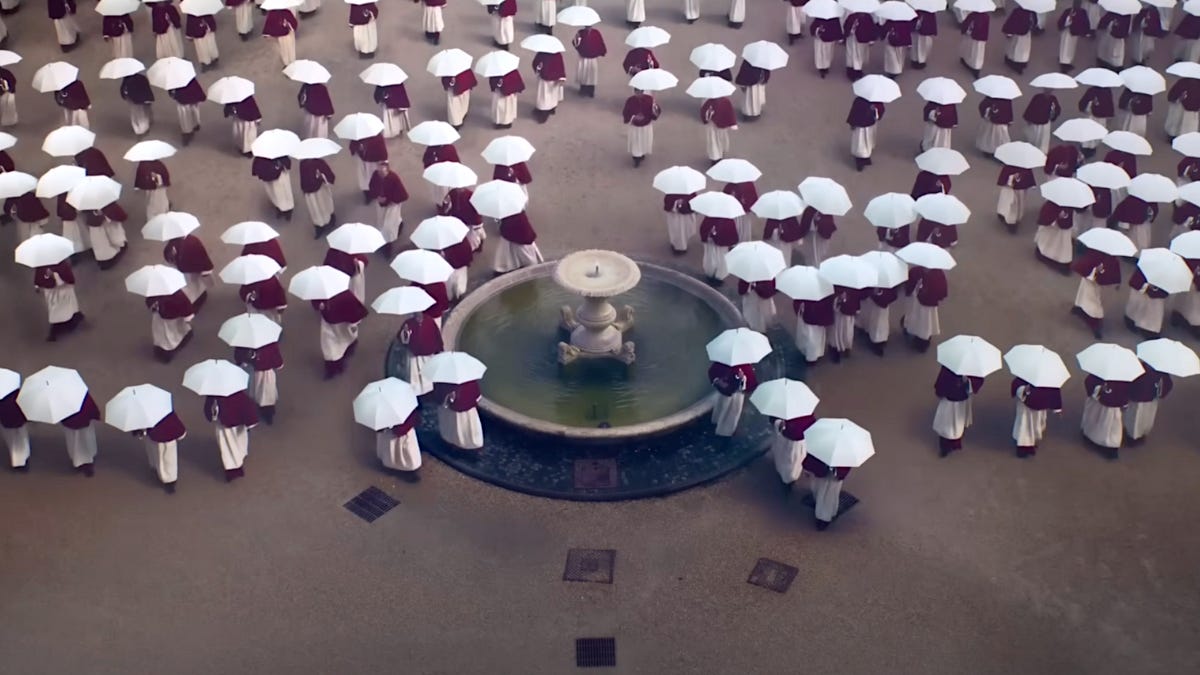
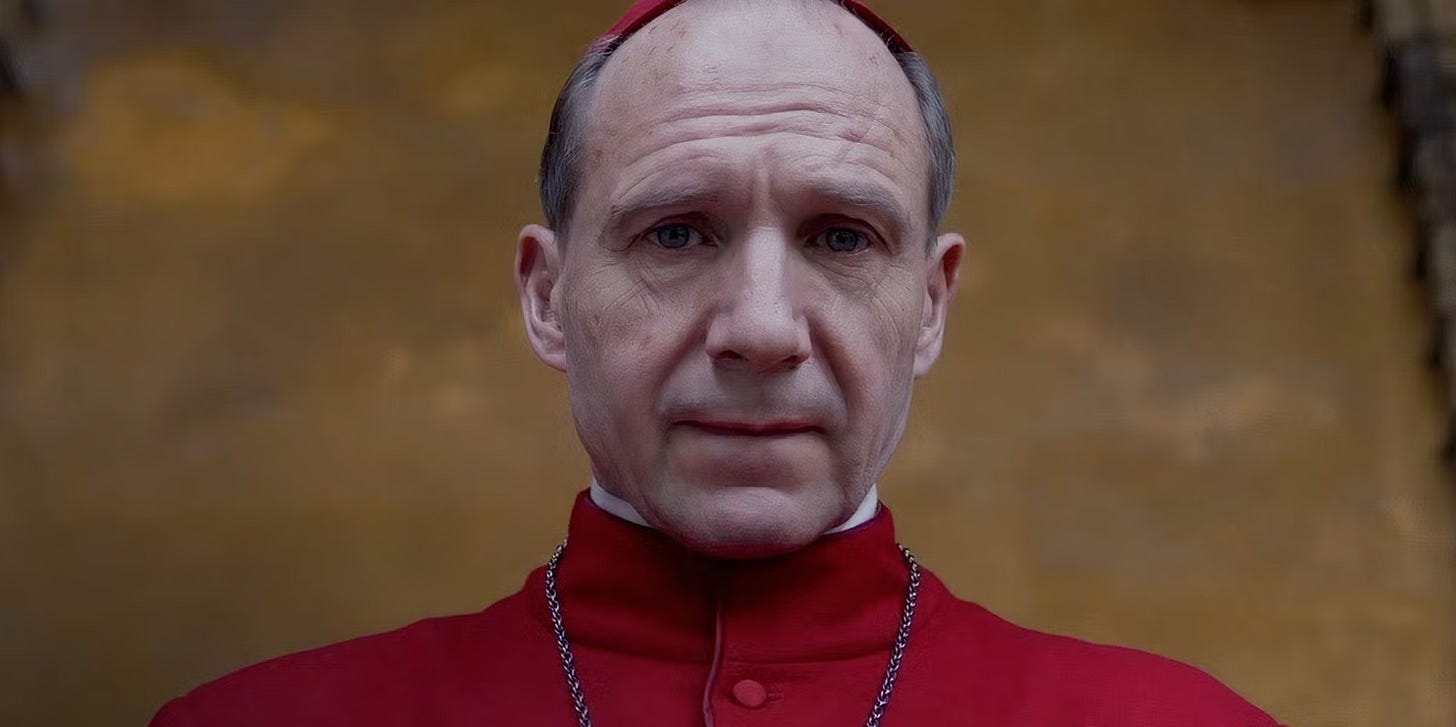
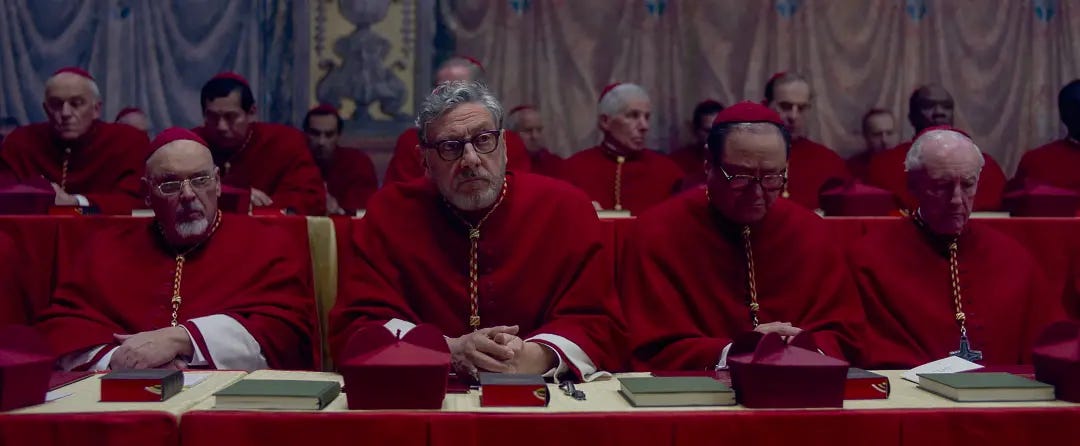

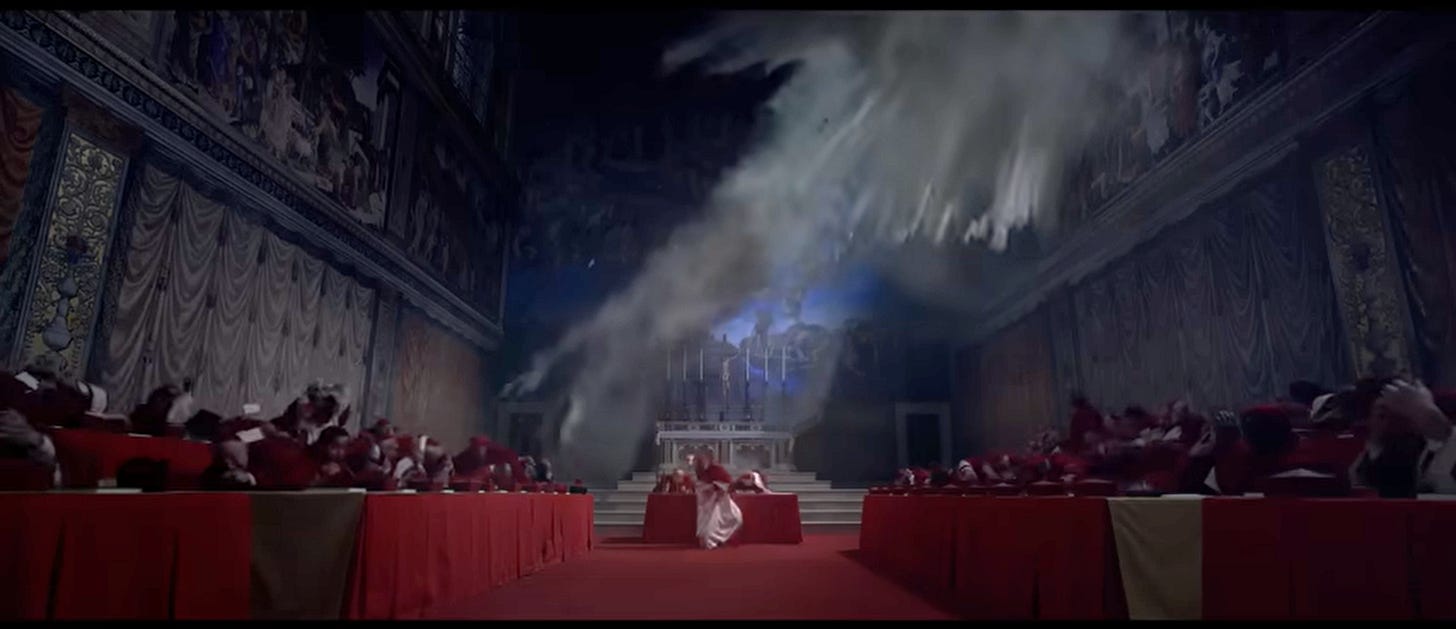
Innocent’s intersexuality was likely caused by her mother’s adrenal hyperplasia. Excess adrenal hormones of the mother masculinized the external genitalia of the fetus. After birth, there was no more masculinization (no beard to shave). I’ll leave the Marian interpretations to you.